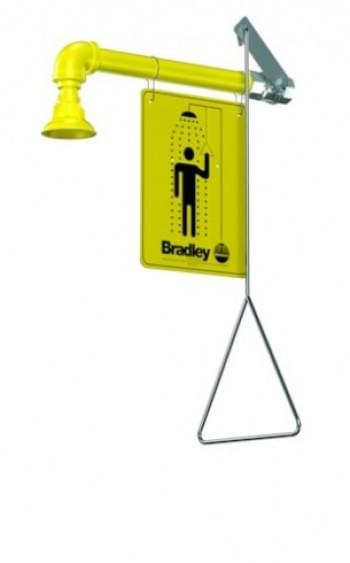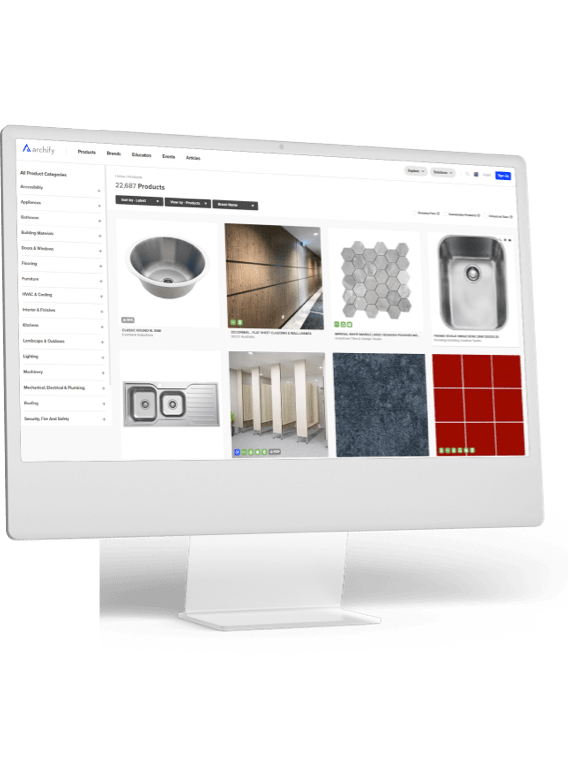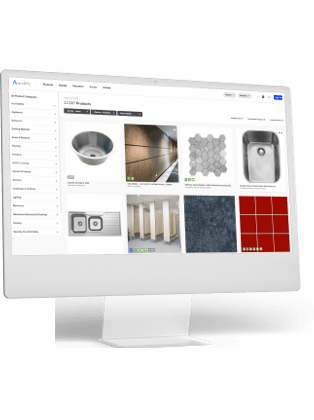Bradley deck-mounted or wall-mounted, dual head drench hoses qualify as an Eyewash when installed according to the ANSI/ISEA Z358.1 guidelines for Eyewashes. A dual head drench hose may be used to flush the eyes or body. In contrast, several single head drench hose models exist exclusively for the purpose of serving as auxiliary safety equipment during an emergency. Single head drench hoses may be deck-mounted, wall-mounted or installed as a retrofit in line with an already existing Eyewash or drench shower in particularly hazardous locations.
Key Features
• Plastic eye/face wash sprayheads
• 8' (2.4 m) drench hose standard (except where noted)
• Squeeze-activated handle (except where noted)
• Locking clip — continuous water flow once activated
• Deck-mounted models include deck mounting hardware
• Wall-mounted models include wall mounting hardware (except where noted)
• All items comply with ANSI/ISEA Z358.1
Emergency Fixture Facts
Dual head drench hoses may take the place of a traditional Eyewash if it complies with all Eyewash performance requirements in Section 5 and/or Section 6 of the standard such as being mounted 6" (152 mm) from any obstruction and 33-53" (838–1346 mm) from the top of the spray pattern to the floor. ANSI/ISEA Z358.1 Section 8.2.1
Back-flow Preventers
To select the appropriate back-flow preventer, check with local governing authorities on local codes and ordinances.
Bradley deck-mounted or wall-mounted, dual head drench hoses qualify as an Eyewash when installed according to the ANSI/ISEA Z358.1 guidelines for Eyewashes. A dual head drench hose may be used to flush the eyes or body. In contrast, several single head drench hose models exist exclusively for the purpose of serving as auxiliary safety equipment during an emergency. Single head drench hoses may be deck-mounted, wall-mounted or installed as a retrofit in line with an already existing Eyewash or drench shower in particularly hazardous locations.
Key Features
• Plastic eye/face wash sprayheads
• 8' (2.4 m) drench hose standard (except where noted)
• Squeeze-activated handle (except where noted)
• Locking clip — continuous water flow once activated
• Deck-mounted models include deck mounting hardware
• Wall-mounted models include wall mounting hardware (except where noted)
• All items comply with ANSI/ISEA Z358.1
Emergency Fixture Facts
Dual head drench hoses may take the place of a traditional Eyewash if it complies with all Eyewash performance requirements in Section 5 and/or Section 6 of the standard such as being mounted 6" (152 mm) from any obstruction and 33-53" (838–1346 mm) from the top of the spray pattern to the floor. ANSI/ISEA Z358.1 Section 8.2.1
Back-flow Preventers
To select the appropriate back-flow preventer, check with local governing authorities on local codes and ordinances.
Bradley deck-mounted or wall-mounted, dual head drench hoses qualify as an Eyewash when installed according to the ANSI/ISEA Z358.1 guidelines for Eyewashes. A dual head drench hose may be used to flush the eyes or body. In contrast, several single head drench hose models exist exclusively for the purpose of serving as auxiliary safety equipment during an emergency. Single head drench hoses may be deck-mounted, wall-mounted or installed as a retrofit in line with an already existing Eyewash or drench shower in particularly hazardous locations.
Key Features
• Plastic eye/face wash sprayheads
• 8' (2.4 m) drench hose standard (except where noted)
• Squeeze-activated handle (except where noted)
• Locking clip — continuous water flow once activated
• Deck-mounted models include deck mounting hardware
• Wall-mounted models include wall mounting hardware (except where noted)
• All items comply with ANSI/ISEA Z358.1
Emergency Fixture Facts
Dual head drench hoses may take the place of a traditional Eyewash if it complies with all Eyewash performance requirements in Section 5 and/or Section 6 of the standard such as being mounted 6" (152 mm) from any obstruction and 33-53" (838–1346 mm) from the top of the spray pattern to the floor. ANSI/ISEA Z358.1 Section 8.2.1
Back-flow Preventers
To select the appropriate back-flow preventer, check with local governing authorities on local codes and ordinances.
Australia










